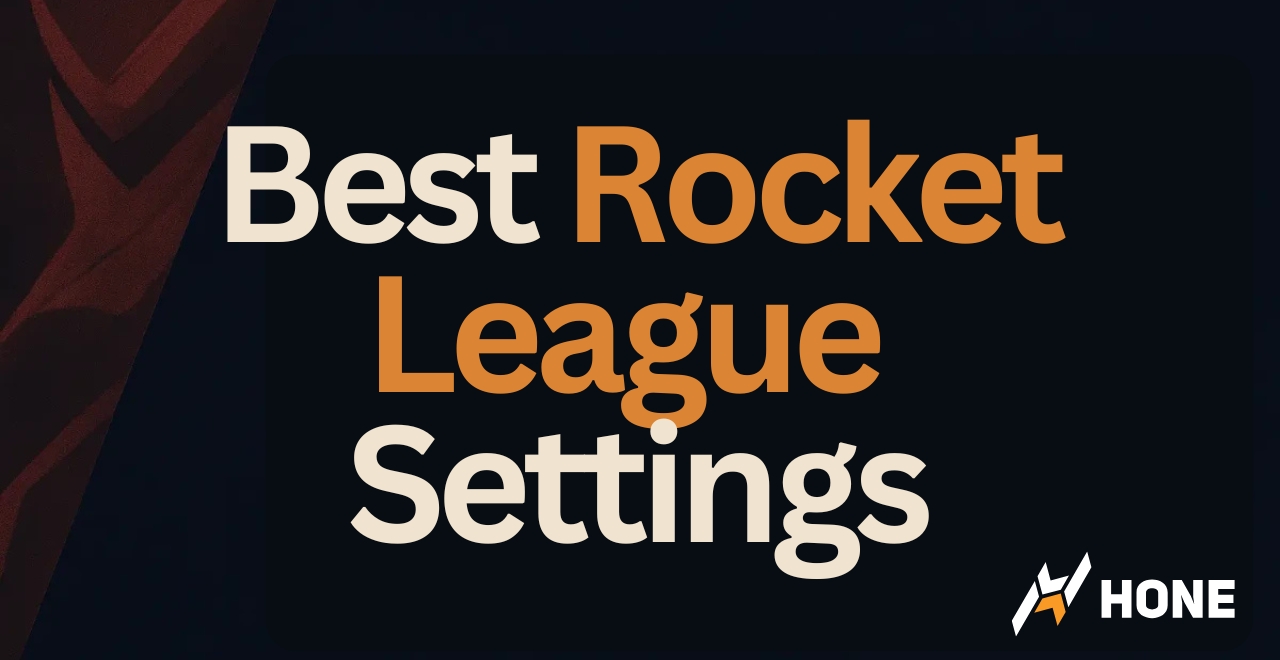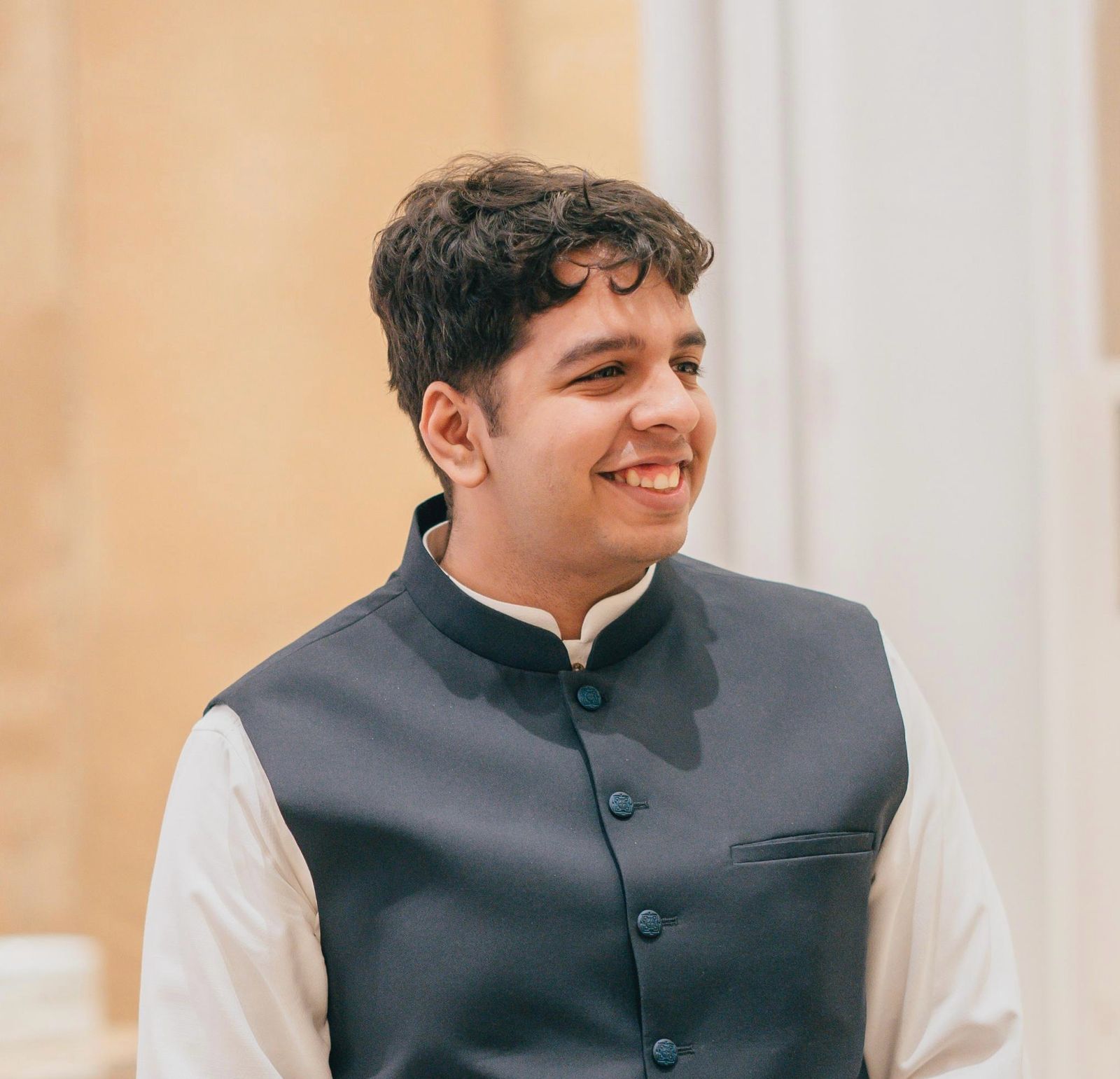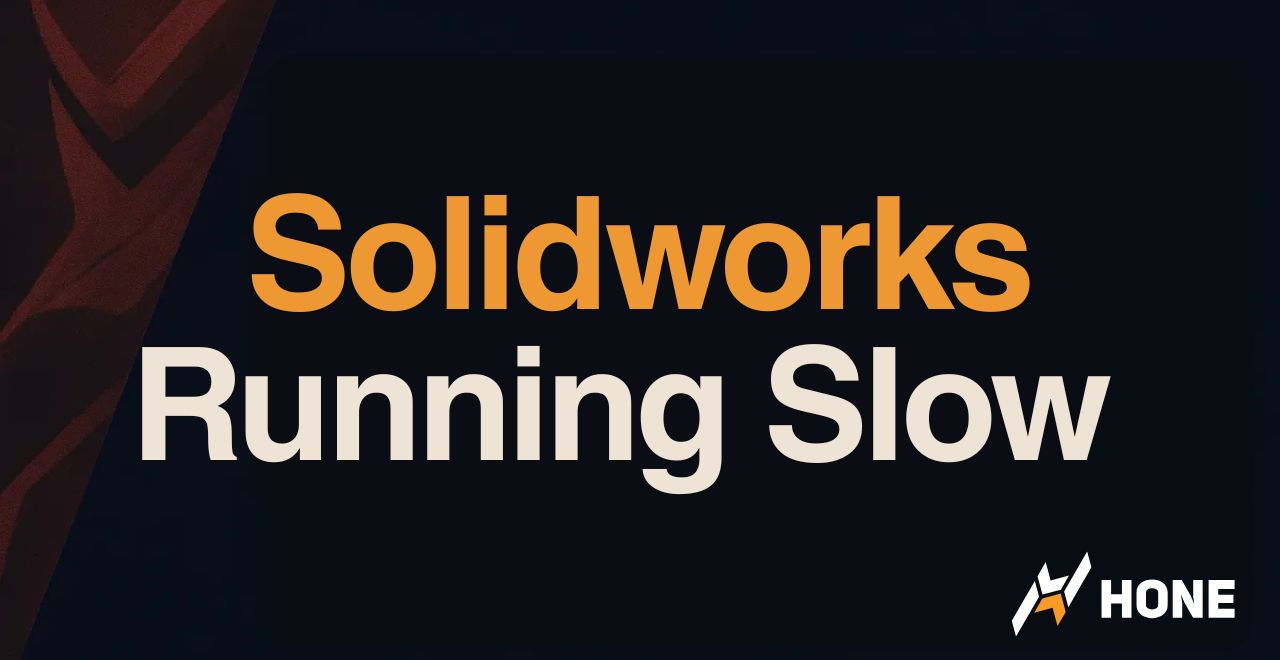You’re hitting double taps in training, but whiffing in ranked. Your car feels heavy, your flicks are slow, and that perfect aerial setup? It’s just not clicking. Before you blame your mechanics, consider this: your Rocket League settings might be holding you back.
Professional Rocket League players spend hours fine-tuning their configurations, treating settings like a Formula 1 team treats car setup.
- Performance over aesthetics – Turn off visual effects for maximum FPS and clarity
- Controller deadzone balance – Find the sweet spot between responsiveness and accidental inputs
- Rebind for mechanics – Move boost to bumper (R1/RB) to unlock fast aerials
- Camera FOV at 110 – Maximum field awareness is non-negotiable
- Sensitivity scales with skill – Start low (1.0-1.4), increase as you improve
- Test incrementally – Change one setting at a time and give yourself adaptation time
- Config file tweaks exist – But most gains come from in-game optimization
Rocket League PC Settings for Peak Performance

In competitive Rocket League, the philosophy is clear: frames win games. While beautiful visuals might enhance casual play, competitive players universally prioritize performance. Think of it as choosing between a sports car with leather seats versus one stripped down for the track; we’re going for speed.
- Pretty shadows and reflections
- 60-100 FPS with drops during action
- Motion blur making ball tracking harder
- Weather effects obscuring vision
- Input lag from VSync
- Bloom creating bright distractions
- Clean, distraction-free visuals
- 144-240+ stable FPS
- Crystal-clear ball tracking
- Maximum visibility in all arenas
- Minimal input lag for instant response
- Focus on gameplay essentials only
Core Video Settings
| Setting | Recommended Value | Impact & Rationale |
|---|---|---|
| Resolution | Native Monitor Resolution | Use your monitor’s native (e.g., 1920×1080). Provides sharpest image for tracking ball and opponents |
| Display Mode | Fullscreen | Lowest input lag by giving the game full control. Windowed fullscreen is also an option when using Windows 11 with optimizations for windowed games turned on |
| Vertical Sync | Off | VSync adds significant input lag unless paired with G-Sync and Nvidia Low Latency Mode or AMD Anti-Lag. Screen tearing is minor compared to response time gains |
| Max FPS | Match refresh rate or uncapped | Higher FPS = smoother gameplay. Cap at 241 for 240Hz monitors, or use config tweaks to uncap |
| Anti-Aliasing | Off | Costs performance and can blur edges. Clean pixels are better for competitive clarity |
| Render Quality | High Performance | Major FPS boost with minimal visual impact on gameplay elements |
| Render Detail | Custom | Allows granular control over advanced settings for maximum optimization |
Advanced Graphics Settings
Set both to High Performance. These primarily affect environmental textures that don’t impact gameplay. Lower settings free up GPU resources for maintaining high FPS during intense moments like demos or multiple car collisions.
Use Performance and Low Intensity respectively. Reduces boost trail complexity and explosion effects. This is crucial during chaotic plays where multiple cars are boosting; you need clarity, not fireworks.
Turn OFF all of these: High Quality Shaders, Ambient Occlusion, Depth of Field, Bloom, Light Shafts, Lens Flares, Dynamic Shadows, Motion Blur, Weather Effects.
Each adds visual flair but reduces performance and can obscure important visual information. Bloom makes boost pads harder to see, motion blur reduces precision during fast movements, and weather effects are purely cosmetic distractions.
Transparent Goalposts: ON. This is critical for defense and goal-line situations. When you’re in or near the goal, the posts become transparent so they don’t block your view of incoming shots or opponents.
Pro Tip: The Signal-to-Noise Principle
Think of your screen as a data stream. The “signal” is what matters: the ball, cars, boost pads, and goal. The “noise” is everything else: shadows, reflections, particles. By eliminating visual noise, you reduce cognitive load and process critical information faster. This is why pros with $5000 PCs still use potato graphics.
Optimal Rocket League Controller Configuration
While keyboard players exist, around 90% of the playerbase uses controllers, and Psyonix themselves recommend it. But the default settings create a fundamental problem: all your most important actions require the same thumb. Let’s fix that.
Essential Controller Rebinds
The default bindings force you to choose between boosting, jumping, and camera control; all mapped to your right thumb. This is like trying to play piano with one finger. Here’s the game-changing solution:
| Action | Default Binding | Optimal Binding | Why This Matters |
|---|---|---|---|
| Boost | Circle/B | R1/RB | Enables boost + jump simultaneously for fast aerials. Your index finger handles boost while thumb stays on jump |
| Powerslide | Square/X | L1/LB | Allows boost + powerslide for recoveries and wave dashes. Crucial for maintaining momentum |
| Air Roll | Square/X | L1/LB (shared) | No conflict since powerslide is ground-only. Enables boost + air roll for aerial control |
| Air Roll Left | Not bound | L1/LB or Square/X | Dedicated directional air roll for half-flips, speed flips, and advanced mechanics |
| Air Roll Right | Not bound | Circle/B (if boost moved) | Second directional air roll. Many pros use just one, but having both increases options |
| Ball Cam | Triangle/Y | Triangle/Y or Square/X | Default is fine, but Square/X saves milliseconds if that button is free |
Pro Tip: The Deadzone Dance
Your controller deadzone and sensitivity work together like dance partners. Low deadzone + high sensitivity = twitchy, hard to control. High deadzone + low sensitivity = sluggish, unresponsive. The magic happens when you find the balance. A good test: try to drive in a perfectly straight line. If it’s impossible, increase your controller deadzone slightly.
Camera Settings Guide
Camera settings are your window into the game world. While everyone agrees on maximum FOV and no camera shake, the perfect combination of distance, height, and angle varies by player. Think of it like adjusting your car seat and mirrors; the goal is finding what gives you the best control and awareness.
| Setting | Universal Agreement | Personal Preference Range | Impact on Gameplay |
|---|---|---|---|
| Camera Shake | OFF (Always) | N/A | Removes screen shake that destroys precision. Most useless setting in the game |
| Field of View | 110 (Maximum) | 108-110 | Maximum peripheral vision for awareness. Slight edge distortion is worth the information gain |
| Distance | N/A | 260-280 | Balances car control feel vs field awareness. Too far = poor ball control. Too close = tunnel vision |
| Height | N/A | 90-110 | Higher sees over ball better, lower helps with ground dribbles. Most use 100-110 |
| Angle | N/A | -3.0 to -5.0 | Camera tilt affects aerial depth perception. -4.0 is a safe middle ground |
| Stiffness | N/A | 0.35-0.70 | How tightly camera follows car. Higher = more direct. Lower = smoother but less precise feel |
| Swivel Speed | N/A | 4.0-7.0 | Right stick look-around speed. Higher for quick checks, lower for precision |
| Transition Speed | N/A | 1.0-1.5 | Ball cam toggle speed. Faster is generally better to minimize disorientation |
For Beginners: Start with Distance 270, Height 100, Angle -4.0, Stiffness 0.45. This provides a balanced view that doesn’t overwhelm.
For Dribblers: Try Distance 250-260, Height 90-100. Closer camera helps with ball control but sacrifices some awareness.
For Aerial Players: Distance 270-280, Height 110, Angle -5.0. Better perspective for reading aerial trajectories.
Tailoring RL Settings to Your Playstyle

Not everyone plays Rocket League the same way. Your settings should reflect your goals, skill level, and preferred playstyle. Here’s how to optimize for different player archetypes.
Focus: Building fundamentals and consistency
Sensitivity: 1.0-1.4 (lower for control)
Deadzones: Controller 0.10-0.15, Dodge 0.60-0.75
Bindings: Start with defaults, add one change at a time
Camera: Standard pro settings for balanced learning
Focus: Consistency and mechanical precision
Sensitivity: 1.2-2.0 (find your balance)
Deadzones: Controller 0.04-0.10, Dodge 0.30-0.70
Bindings: Full optimization required (boost on bumper)
Camera: Fine-tune within pro ranges for preference
Focus: Maximum mechanical expression
Sensitivity: Often 2.0+ for rapid movements
Deadzones: Controller ultra-low (0.02-0.05), varied dodge
Bindings: Both directional air rolls essential
Camera: May prioritize car visibility over field awareness
Advanced Rocket League Setting Optimizations
While most performance gains come from in-game settings, a few system-level tweaks can provide that extra edge. These range from simple Windows adjustments to configuration file edits.
Set your power plan to “High Performance” or “Ultimate Performance”. This prevents CPU throttling during gameplay. Access via Control Panel > Power Options.
NVIDIA users: Set “Power management mode” to “Prefer maximum performance” (which will use more power) and “Texture filtering – Quality” to “High performance”.
AMD users: Similar options exist in Radeon Software. Prioritize performance over quality.
Located in Documents\My Games\Rocket League\TAGame\Config. Key edits:
- AllowPerFrameSleep=False – Uncaps FPS beyond in-game limits
- MaxAnisotropy=16 – Sharper textures at angles with minimal performance cost
Note: Config edits exist in a grey area. Stick to these well-known tweaks and always backup first.
In Steam, right-click Rocket League > Properties > Launch Options:
- -nomovie – Skip intro videos for faster startup
- -ResX=1920 -ResY=1080 – Force specific resolution if having issues
Pro Tip: The Testing Protocol
When adjusting settings, follow this protocol:
- Change ONE setting at a time
- Test in Free Play for 10-15 minutes
- Play 3-5 casual matches before judging
- Give major changes (like new bindings) at least a week
Your brain needs time to adapt. What feels wrong on day one might feel perfect by day seven.
To Your Perfect Setup
As your skills evolve, so should your configuration. What works for a Gold player learning aerials won’t necessarily work for a Champion perfecting double touches.
Start with the fundamentals: maximize your FPS, eliminate input lag, and ensure your controls allow simultaneous actions. From there, it’s about finding what feels right for your hands, your eyes, and your playstyle.
Remember, even pros constantly tweak their settings. The only wrong configuration is one that holds you back from enjoying the game and reaching your potential. Now get out there and start climbing, with settings that actually work for you.
FAQs
Should I copy a pro player’s exact settings?
Use pro settings as a starting point, not a final destination. Their configurations work for their specific hardware, playstyle, and thousands of hours of muscle memory. Start within pro ranges, then adjust based on what feels comfortable for you.
Why do pros use such low graphics settings?
Competitive players prioritize consistent high FPS and visual clarity over aesthetics. Pretty graphics add distractions and potential frame drops during crucial moments. In Rocket League, 240 stable FPS beats ray-traced shadows every time.
Is controller really better than keyboard?
While keyboard players can reach high ranks, controllers offer analog input for precise speed and steering control. About 90% of players use controllers, including nearly all pros. The analog sticks provide gradual input that keyboards can’t match.
How long does it take to adapt to new bindings?
Expect 1-2 weeks of awkwardness when changing major bindings like moving boost to bumper. Your muscle memory needs time to rewire. Most players report feeling comfortable after 20-30 hours of play with new bindings.
What’s the most important setting to change?
If you change nothing else: turn off camera shake, set FOV to 110, and move boost to R1/RB. These three changes alone will dramatically improve your gameplay experience and mechanical potential.
Do I need to edit config files?
No. Config file edits like uncapping FPS provide minor benefits compared to proper in-game optimization. Focus on the in-game settings first. Only consider config tweaks if you have a high-refresh monitor exceeding 240Hz.
Why can’t I air roll and boost at the same time?
This is the classic default binding problem. With boost on Circle/B and air roll on Square/X, your thumb can’t press both. Moving boost to R1/RB solves this, allowing simultaneous inputs with different fingers.
Should steering and aerial sensitivity be the same?
Yes. Keeping them identical maintains consistent muscle memory whether you’re on the ground or in the air. Different sensitivities can confuse your brain during transitions like jumping into aerials.






 Discord
Discord
 Instagram
Instagram
 Youtube
Youtube
 TikTok
TikTok